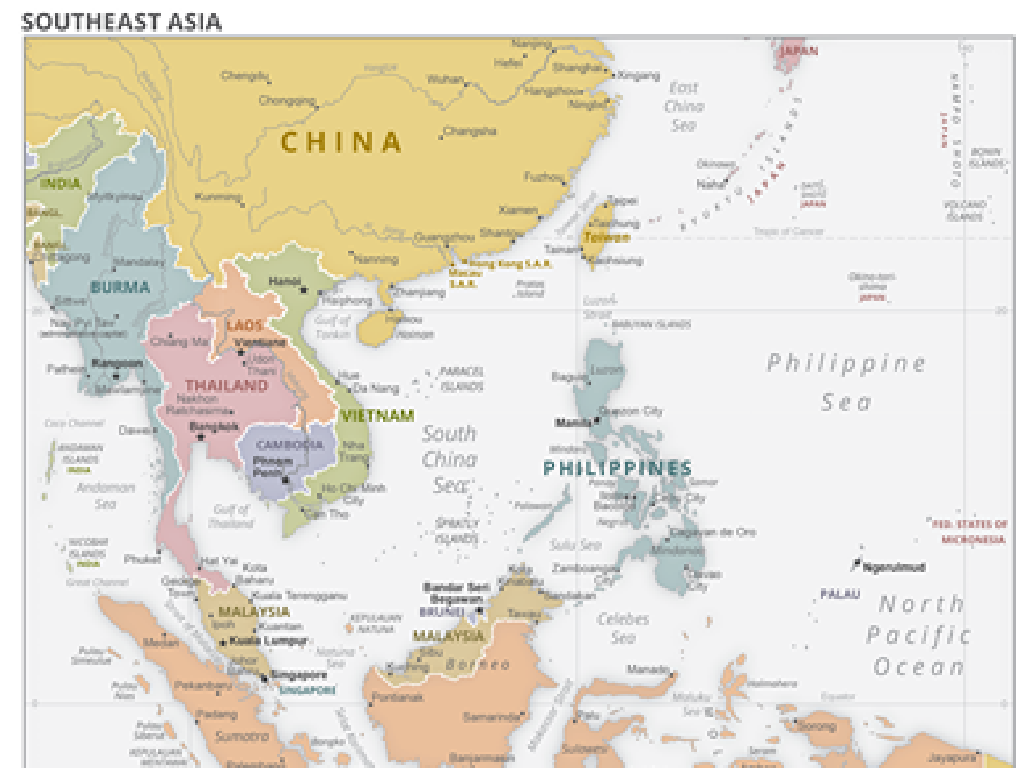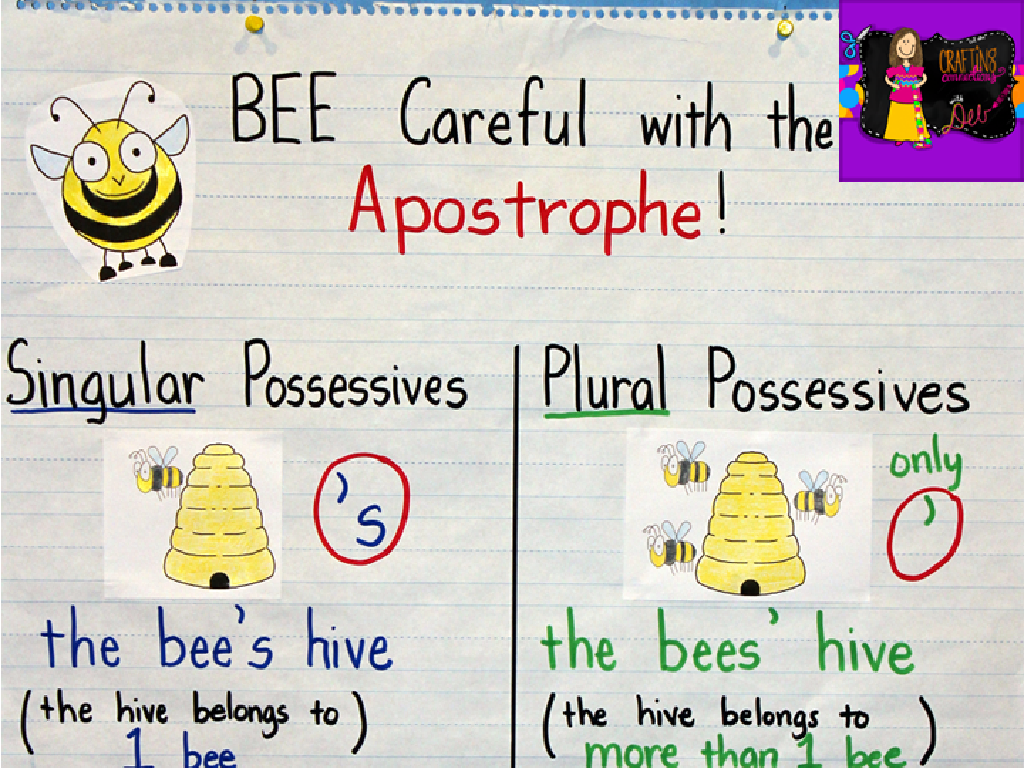Lines, Line Segments, And Rays
Subject: Math
Grade: Sixth grade
Topic: Lines And Angles
Please LOG IN to download the presentation. Access is available to registered users only.
View More Content
Introduction to Lines and Angles
– Exploring lines, segments, rays
– Lines extend indefinitely
– A line has no starting or ending point
– Segments have two endpoints
– A line segment’s length is measurable
– Rays start at a point, extend forever
– A ray has one fixed point and one direction
|
Begin the class with a warm welcome and an introduction to the fundamental concepts of geometry: lines, line segments, and rays. Explain that a line is a straight path that extends infinitely in both directions with no endpoints. Contrast this with a line segment, which has two distinct endpoints and is a portion of a line. Then, describe a ray as a part of a line that starts at a specific point and extends infinitely in one direction. Emphasize the importance of these concepts as building blocks in geometry, which students will use to understand shapes, design, and even in solving real-world problems. Encourage students to visualize these concepts with examples and to think about where they see lines, segments, and rays in everyday life.
Exploring Lines in Geometry
– Definition of a line
– A line is straight with no endpoints.
– Lines extend infinitely
– Imagine a line going on forever in both directions.
– Real-life examples of lines
– Roads, train tracks, and the horizon.
– Understanding lines in geometry
|
Introduce the concept of a line as a fundamental element in geometry, which is perfectly straight and extends indefinitely in both directions without any endpoints. Use everyday examples such as roads, train tracks, and the horizon to help students visualize lines in the real world. Emphasize that in mathematical terms, lines are abstract and idealized; they don’t actually end. Encourage students to think about how lines are represented in diagrams and how they form the basis for understanding more complex geometric concepts.
Exploring Line Segments
– Line segment definition
– A line segment has two distinct endpoints.
– Line segment vs. line
– Unlike a line, a line segment doesn’t extend infinitely.
– How to measure length
– Use a ruler to measure the distance between endpoints.
– Practical applications
– Used in geometry for shapes, designs, and construction.
|
A line segment is a basic concept in geometry that represents a portion of a line with two endpoints. It’s crucial for students to distinguish between a line that extends infinitely in both directions and a line segment that has a fixed length. Teach students how to measure the length of a line segment using a ruler, which is a practical skill they will use in various mathematical problems. Emphasize real-world applications of line segments, such as in architectural designs, engineering, and everyday measurements. Encourage students to bring examples of line segments from their surroundings to connect the concept with real life.
Exploring Rays
– Definition of a ray
– Starts at a point, extends infinitely one way
– How to name rays
– Named with endpoint first, another point next
– Rays in the real world
– Sun’s rays, laser beams, flashlight beams
– Practice identifying rays
|
Introduce the concept of rays to students by defining what a ray is and how it differs from a line and a line segment. Emphasize that a ray has one fixed endpoint and extends infinitely in one direction. Teach students the convention for naming rays, using two points: the endpoint and another point the ray passes through, with the endpoint always written first. Provide examples of rays in the environment, such as sunlight or the beam of a flashlight, to help students visualize the concept. Conclude with an activity where students identify and draw rays, both in geometric figures and by observing their surroundings.
Comparing Lines, Segments, and Rays
– Define lines, segments, and rays
– Lines are endless, segments have fixed endpoints, rays start at a point and extend infinitely in one direction.
– Interactive examples for clarity
– Use a whiteboard to draw and differentiate between them with the class.
– Quick quiz on identification
– Students will label parts of diagrams as lines, segments, or rays.
– Discuss quiz answers and reasons
|
This slide aims to clarify the differences between lines, line segments, and rays. Begin by defining each term: a line is straight and extends infinitely in both directions, a line segment is part of a line with two endpoints, and a ray starts at one point and goes on forever in one direction. Use interactive whiteboard examples to illustrate these concepts, asking students to come up and draw their own. Follow up with a quick quiz where students identify these elements in various diagrams. Review the quiz answers as a class, discussing why each part of the diagram is a line, segment, or ray. This will reinforce their understanding and help them visualize the concepts.
Real-World Applications of Lines and Segments
– Architecture uses lines and segments
– Buildings are designed using various lines and angles for structure and aesthetics
– Maps and blueprints rely on lines
– Roads and property lines are depicted with lines; blueprints show measurements
– Everyday objects have line segments
– Desks, doors, and pencils all have line segments; they are the edges and sides
– Understanding practical geometry
|
This slide aims to show students how the geometric concepts of lines, line segments, and rays they learn in class apply to the real world. In architecture, these elements are crucial for creating structures that are both functional and visually appealing. Maps and blueprints are another practical application, where lines represent roads, paths, and boundaries, and help in understanding spatial relationships. Everyday objects are full of examples of line segments – the edges of a book, the frame of a window, or the stripes on a road. Encourage students to observe their surroundings and identify lines and segments, reinforcing their understanding of geometry’s relevance.
Class Activity: Creating with Lines
– Use string for line segments
– Use straws for rays
– Form geometric shapes in groups
Combine segments and rays to make shapes
– Present and explain your creation
Discuss the types of lines in your shape
|
This hands-on activity is designed to help students apply their knowledge of lines, line segments, and rays in a collaborative and creative way. By using strings and straws, they can physically manipulate these concepts to form various geometric shapes. Encourage students to work together in small groups and think about how these elements can be combined to create different figures. After the activity, each group will share their creation with the class, explaining which parts are line segments and which are rays, reinforcing their understanding of the concepts. For the teacher: Prepare strings and straws beforehand, ensure each group has enough materials, and consider having a few example shapes to show as a starting point. Possible shapes include triangles, squares, and more complex polygons, each demonstrating the use of line segments and rays.
Wrapping Up: Lines, Segments, and Rays
– Recap: lines, segments, rays
– Homework: find and draw examples
– Look around your home or outside to spot real-world examples of lines, line segments, and rays, then sketch them.
– Discover lines in your environment
– Use objects like pencils, edges of books for segments, and sunrays for rays as examples.
– Next class: Angles and their types
|
As we conclude today’s lesson, ensure students have a clear understanding of lines, line segments, and rays. For homework, they should observe their surroundings to find practical examples of each, such as the edge of a ruler (segment) or the beam of a flashlight (ray), and draw these in their notebooks. This activity will help reinforce their understanding by relating the concepts to real-world objects. Prepare them for the upcoming lesson on angles by mentioning the connection between lines and angles. Encourage them to think about how lines and rays come together to form angles, setting the stage for the next class.






